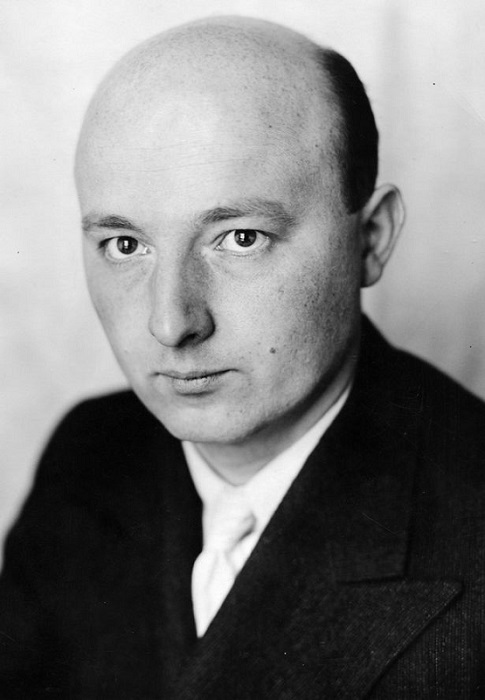Most of us grew up watching cartoons, and we're now adults who can't imagine life without them. But do you know how they were made? What about the people behind the scenes who not only brought these characters to life but also helped establish the art of animation as it is today?
It’s time to share some early animators that you might not have heard of before (and maybe even introduce you to some new favorites). Let’s get started!
Early Animators 1: Max Fleischer

Image via IMDb
Max Fleischer was a German-American animator, inventor, and filmmaker born on July 19, 1883. Max Fleischer's journey began in the enchanting city of Kraków, but he was destined for greater things, so he packed his bags and set out for the United States, where he embarked on an animated adventure that would change the course of cinematic history.
Along with his younger brother Dave, Max founded Fleischer Studios, which became the birthplace of beloved characters such as Koko the Clown, Betty Boop, Popeye, and Superman, who captured the hearts of audiences across the nation.
Max's innovative spirit knew no bounds, and he pushed the boundaries of animation with groundbreaking technologies like rotoscope animation, cementing his place as a true pioneer in the art form.
Early Animators 2: Winsor McCay
Image via Wikimedia Commons
Winsor McCay was an American cartoonist and animator. He is best known for his work on the comic strip Little Nemo, which he wrote, drew, and produced from 1905 to 1914.
With his ink-stained hands and boundless creativity, McCay crafted a world that was breathtakingly beautiful. He was a master of linear perspective, turning ordinary cityscapes into works of art with bold, prodigious strokes of his pen.
His editorial cartoons were teeming with intricate details, thanks to his copious use of fine hatching. And let's not forget his crowning achievement - Little Nemo which used a colorful, kaleidoscopic wonderland where color played a starring role.
McCay's comic strip work has inspired generations of cartoonists and illustrators, but his animation was truly in a league of its own. He was a pioneer of countless animation techniques, including inbetweening, registration marks, and cycling, that became standard practice in the industry.
McCay was a visionary who set the bar for naturalism, smoothness, and scale, paving the way for animation giants like Fleischer Studios and Walt Disney.
Early Animators 3: Oskar Fischinger

Image via Mirror
Hold onto your hats because we're about to dive into the wild world of Oskar Fischinger! This German artist and animator was truly a man ahead of his time, breaking all the rules and creating abstract animated films before they came into existence!
He was part of the iconic Bauhaus movement, but his art was so out-of-this-world that he was truly in a league of his own. Fischinger's abstract animations were like nothing anyone had ever seen before, and they left audiences gobsmacked long before computers and music videos were even a twinkle in anyone's eye.
But that's not all! Fischinger was also a special effects wizard, and his work on Fritz Lang's Woman in the Moon still has us gasping in awe. And then there's his influence on Disney's Fantasia, which brought the art of animation to dizzying new heights.
With over 50 short films under his belt and around 800 canvases painted, Fischinger left an indelible mark on the world of art and animation, and his legacy continues to inspire us all to this day.
Early Animators 4: William Kentridge

Image via Fondation Louis Vuitton
William Kentridge is a South African artist who works in a variety of media, including animated films and drawings. His work has been described as "fantastical" and often deals with themes from his childhood growing up during apartheid, where he was exposed to political violence at an early age.
His most famous work is titled Mine, a 5-minute and 50-second production that makes use of charcoal and pastel drawings, and was originally recorded on 16mm film before being transferred to video. The film's storyline centers around a character named Soho Eckstein, who is portrayed as a mine owner.
The story highlights the contrast between the harsh reality of deep-level mining and the importance of ecological conservation. Overall, the film presents a thought-provoking narrative, exploring the themes of power, greed, and the impact of human activity on the environment.
Early Animators 5: Norman McLaren
Image by NFB
Norman McLaren was born in Winnipeg, Canada on 11 April 1914. He worked as an animator for the National Film Board of Canada from 1936 to 1981. His most famous works include "Neighbours," which won him an Oscar for Best Animated Short Subject in 1947, and "Blinkity Blank" (1950), which also received an Oscar nomination.
McLaren was a master of hand-drawn animation, drawn-on-film animation, visual music, abstract film, pixilation, and graphical sound. He was more than just an animator, though. He was also a talented artist and printmaker, and he even delved into the world of dance. That's right, he was a true Renaissance man, and his films reflect his many passions and talents!
He combined two of his favorite passions - music, and sound - and invented a technique called "animated sound." This involved drawing sound waves directly onto the filmstrip, creating a visual representation of the sound, he found a way to make the music dance on the screen!
McLaren's creativity and ingenuity in both animation and music prove his valuable contribution to the evolution of animation.
Early Animators 6: George Dunning

Image via TMDB
Get ready to rock and roll with George Dunning, an animation maestro who was so cool that he made the Beatles' "Yellow Submarine" come to life! Dunning started off as an architect before making the jump to animation, which may have contributed to his unique approach to visual design. His films were a feast for the eyes, bursting with vivid colors, trippy imagery, and a wicked sense of humor.
He worked at the GPO Film Unit and pioneered rotoscoping, which involves tracing over live-action footage to create animation. But that's not all - Dunning was a total pioneer when it came to computer animation. He was one of the first animators to dive into the realm of computer-generated imagery.
It's no surprise that he left a lasting impact on the animation industry and inspired future generations of animators to follow in his footsteps. Dunning was a visionary and his work continues to shine like a bright, psychedelic rainbow and has earned a star on the Hollywood Walk of Fame for his contribution to film.
Early Animators 7: Len Lye
Image via NZ History
Lye enrolled at Wellington Technical College after graduating from high school and studied business until 1918, when he shifted to painting. He relocated to Sydney in 1922, where he temporarily worked as an animator and tried his hand at kinetic sculpture.
Beginning in 1929, Lye produced his first animated films, fusing Mori, Aboriginal, Samoan, and modernist influences. Because he couldn't afford a camera, he tried painting straight on film, and the result was Colour box (1935), which was honored at the international film festival in Brussels.
Lye visited New York in 1944 and decided to stay because he was so fascinated. He got immersed in abstract expressionism, made kinetic sculptures and videos, and developed an international following. In 1950, he became a citizen of the US.
These Early Animators Established The Art of Animation
Gif by Boomerang Official via GIPHY
We have only begun to explore the early animators who helped to create the animation industry as we know it today! We owe a huge debt of gratitude to these pioneering animators for creating this incredible form of art. They paved the way for our favorite cartoons and made millions of people around the world smile and laugh.
We will always be indebted to them for their outstanding innovations, creativity, and legacy. They will always serve as the cornerstone of the animation industry, and we are eager to watch where they will go in the years to come. Who knows—perhaps you'll be the next animator to make history someday!
For more information about early animators, as well as answers to any other questions you might have, be sure to follow our blogs, check out our free masterclass, and our Animation Business Accelerator Program, download a copy of our free marketing handbook, and check out our blog on “How to Start an Animation Studio”!



